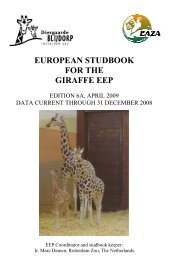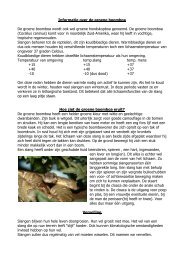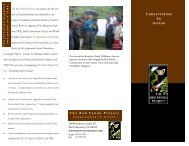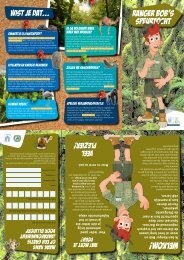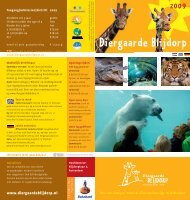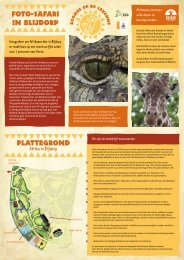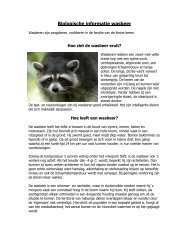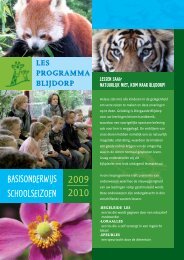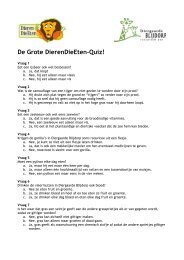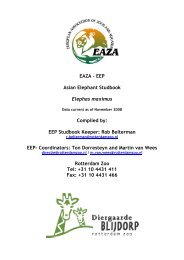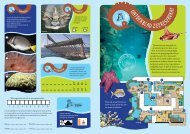Create successful ePaper yourself
Turn your PDF publications into a flip-book with our unique Google optimized e-Paper software.
<strong>EEP</strong> STUDBOOK CROWNED PIGEONS<br />
6.6 Results from the study in Papua New Guinea<br />
6.6.1 Observations and interviews<br />
It is known that crowned <strong>pigeon</strong>s spend most of their time on the ground. Because of their size,<br />
they only fly when it is necessary; for instance in case of danger or to find a safe place to sleep.<br />
They rest upon branches about 15 meter high. At dawn (in the Lakekamu Basin at about 6<br />
o'clock) they come down and start looking for a suitable location to forage. They are foraging<br />
until shortly after noon. At two o'clock it's the hottest time of the day and the birds are going to<br />
small creeks to rest, bath and drink. Later in the afternoon they start looking for a place to sleep,<br />
because at 6 o'clock in the afternoon it's dark again. They do not have fixed trees to sleep,<br />
because they seem not to have a territory.<br />
Also a time budget analysis in captivity was carried out and for this reason the 8 enclosures were<br />
categorized into three different groups: small enclosures with little variation in substrate, plants,<br />
branches and so on, medium enclosures with more variation and large enclosures with a lot of<br />
variation. Now we have a fourth category: the wild. All kinds of behaviour were divided into<br />
seven categories: spatial behaviour (e.g. walking), behaviour in time (sitting, sleeping), sexual<br />
behaviour (incl. hatching the egg), positive social behaviour, negative social behaviour, care<br />
behaviour and metabolic behaviour (feeding).<br />
Behaviour Small Medium Large Wild<br />
Space 4 19 12 32<br />
Time 68 51 46 14<br />
Sex 0 11 25 0<br />
Socpos 0 0 0 0<br />
Socneg 0 0 2 4<br />
Care 8 9 3 14<br />
Meta 20 10 12 36<br />
Especially the metabolic behaviour, care behaviour and spatial behaviour are higher in the wild,<br />
while behaviour in time is much lower in the wild. As well as in the wild as in captivity the<br />
<strong>pigeon</strong>s were observed during the whole active period, which means that during that time it<br />
wasn’t dark. <strong>Crowned</strong> <strong>pigeon</strong>s in the wild need to look for their food and sometimes it is hard to<br />
distinguish between behaviour in space (“just walking around”) from metabolic behaviour<br />
(“foraging”). Furthermore the <strong>pigeon</strong>s in captivity are many times “just standing” and this<br />
behaviour was observed less in the wild. <strong>Crowned</strong> <strong>pigeon</strong>s in the wild really need to look for<br />
their food and also be aware of danger. In the afternoon they spend a lot of time on personal care:<br />
they are cleaning their feathers standing at the water-side.<br />
It became clear that birds in a more rich environment are much more active, which means also<br />
attractive to the public. Therefore it is advisable to give the birds different types of substrate,<br />
some shrubs and trees in their enclosure and perches on different heights and locations.<br />
136



